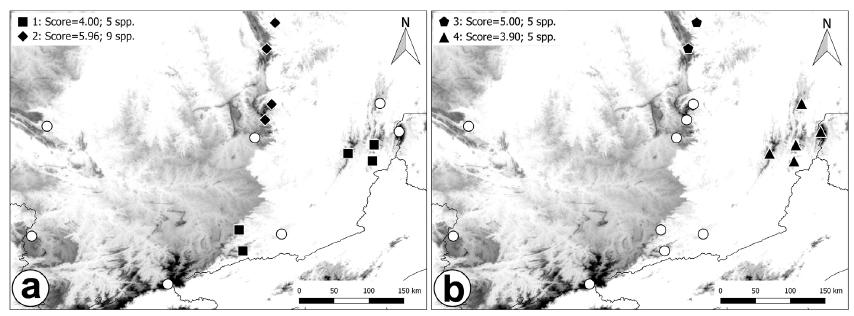ABSTRACT
Biogeographic tools support spatial distribution pattern hypotheses and help to determine priority areas for conservation. Our aim was to verify biogeographic patterns for anurans in three mountain complexes in southeastern Brazil, as well as to discuss the status of species conservation recorded and the biogeographical units evaluated. We selected 16 areas distributed in the Serra da Mantiqueira complex, south of Serra do Espinhaço and Serra da Canastra. We used the occurrence (geographic coordinates) of each species in the localities to determine areas of endemism applying the Endemicity Analysis method. We also tested whether similarity between areas was explained by geographic distance (Multiple Regression on distance Matrices-MRM). The Serra do Itatiaia, Serra da Canastra, Plateau of Poços de Caldas and Serra do Cipó were the areas that presented the highest number of species restricted to them. Through the Endemicity Analysis, we identified four areas of endemism with higher scores. The MRM revealed that the geographic distance explained 41% of species dissimilarity between areas. Most of the endemic species from these areas have inaccurate conservation statuses (data deficient or unevaluated). These results highlight the need for greater research efforts towards understanding species restricted by distribution, as well as the priority in conserving these endemic areas.
Key words:
endangered species; endemism; highlands; Mantiqueira Complex; Serra da Canastra; Serra do Espinhaço



